The Top 12 Best Fuels For Your Beehive Smoker
Don’t be fooled by a lot of misinformation on the internet involving fuels for your beehive smoker. You need to be careful about the fuel you select because you don’t want fuel that requires a lot of heat to combust. This will produce a hot smoke that could potentially burn your bees and yourself.
The best fuel for a beehive smoker is simple and affordable, easy to light, burns for a long time and produces a cool smoke without injuring your bees or yourself. Bees need only feel cool gentle smoke from your smoker and not heat and sparks to be effective.
Choosing the right smoker fuel is so important especially as a new beekeeper. In this post I want to share the best fuels that I’ve used-and those that I’ve seen-and keep you and your bees safe and healthy.
A quick note on starters for getting your fuel lit and smoking. The best starter is balled up newspaper, shop towel, or scrap paper. These starters have a low combustion point, are easily lit with a lighter, and will quickly get your smoker fuel smoldering.
Some people will use a propane or butane torch, but I’ve found you really don’t need that if you use the starter fuel listed above. You can use a simple lighter or barbeque lighter to quickly get your smoker up and puffing.
Don’t use wood sticks, or twigs as a starter because it takes way too much heat to get wood burning. You do not want a mini campfire in your smoker. The smoke will be too hot, and you could easily burn yourself, your bees, and even cause a grass or forest fire. Bee smokers are dangerous and its always best to be careful.
Also, I wrote an article all about what kind of smoke is best for calming bees that I encourage you to read!
Pine Needles
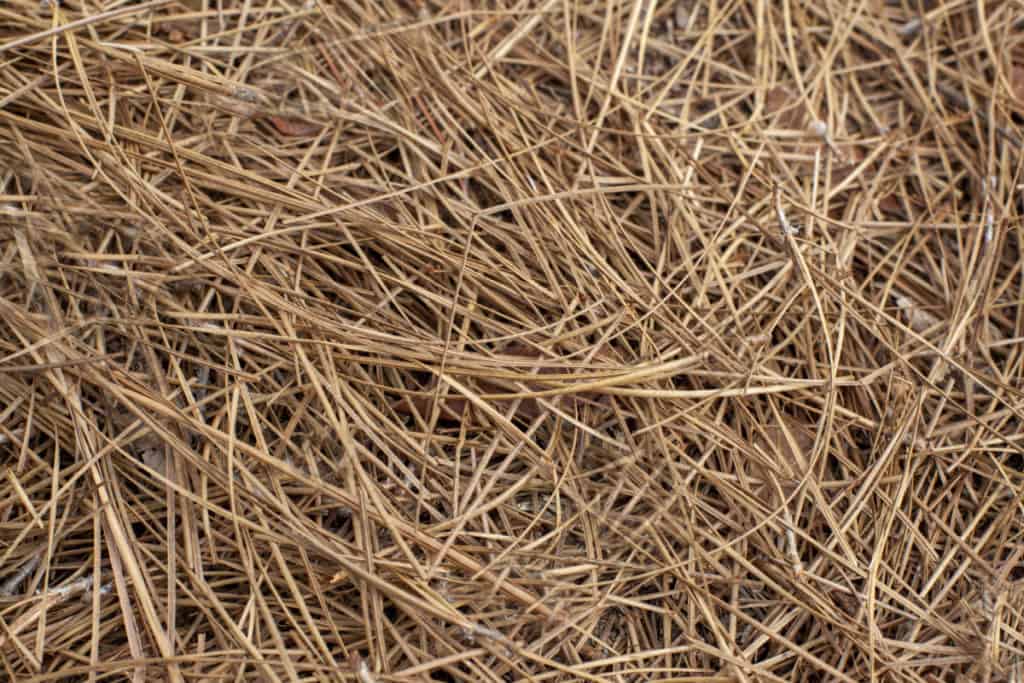
Pine needles or pine straw in some regions, is by far the best smoker fuel because it’s so easy to light, smells nice, and more importantly gives off a nice cool smoke. You can easily handle your smoker without burning yourself and the cool smoke it produces is so gentle on bees.
The best way to light pine needles is to simply use paper as a starter. Ball up some paper and light it in the bottom of your smoker. Then stuff dried pine needles on top while pumping the bellows and keep stuffing in more pine needles until your smoker is full. Then pump the bellows a few more times to get those needles smoldering and smoking perfectly.
The only problem is you will eventually run out of pine needles and have to use other types of smoker fuels.
Dried Grass Clippings

Once you run out of pine needles or if you simply don’t have any, dried grass clippings are a fantastic bee smoker fuel. Grass clippings are easy to gather and are always available.
You simply cut your grass, let the clippings dry, then gather them and put them in an old feed bag, or in 5-gallon pails. Then you always have smoker fuel ready to go.
Also, since most people cut their grass every week or so you always have a free and reliable source of fuel for your bee smoker.
Like pine needles, dried grass clippings are easy to light and get smoking. Again, use paper or even a piece of shop towel as a starter. Ball it up and place in the bottom of your smoker and light it. Then start stuffing grass clippings on top, while pumping the bellows and continuing to stuff grass clippings in until full. Then close the lid on your smoker, pump the bellows a few more times and you’ll have nice cool smoke.
Also, like pine needles, even after you leave your smoker for a few minutes it only takes a few pumps of the bellows to get smoke coming out again. Dried grass clippings make for a very easy, safe, and affordable fuel for your bee smoker.
Dry Hay
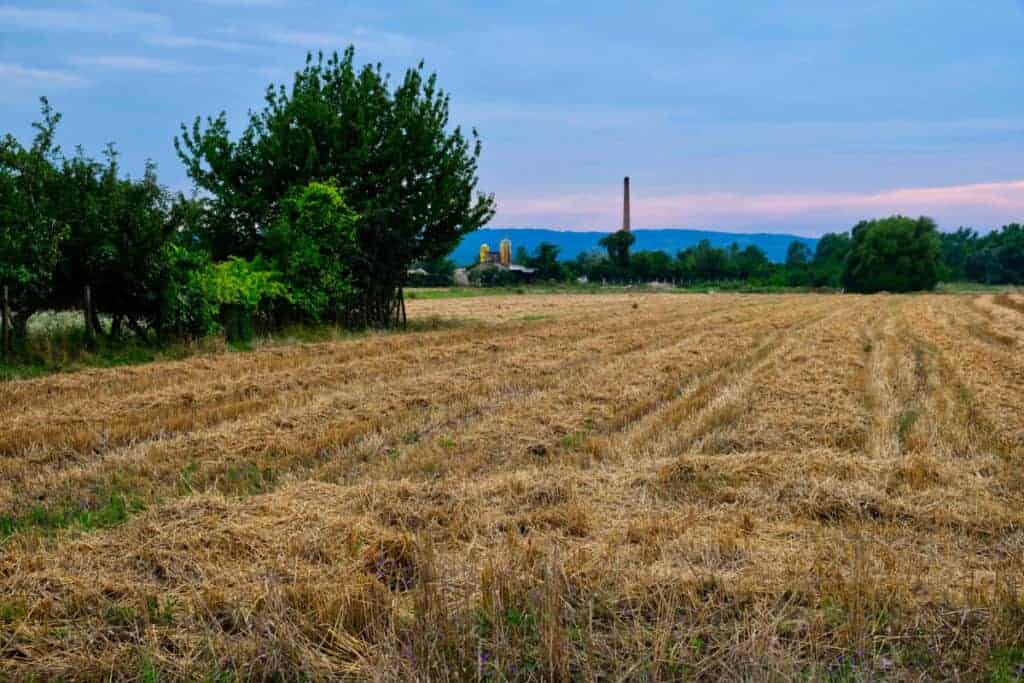
Dry hay is a great fuel for your bee smoker. It has much of the same qualities as dried grass clippings such as: easy to find, easy to light, and produces a cool gentle smoke for your bees. Many beekeepers use dry hay as a fuel for their bee smokers.
If you have a livestock farm, then you’ll likely already have access to an unlimited supply of loose hay. But if not, you can simply speak with local farmers and either purchase loose hay or they will just give you some. Hay is pretty cheap and the amount you need for a smoker is a lot less than what livestock consumes.
Dry hay like dried grass clippings and pine needles is easy to light. Simply ball up a piece of paper in the bottom of your smoker, light it, then continually pump the bellows while stuffing in dry hay. Once your smoker is full, close the lid, pump the bellows a few more times and you’ll have nice cool smoke.
Other than dried grass clippings, dry hay is definitely the cheapest and most reliable source of bee smoker fuel.
Here is a great video demonstrating how to safely light your smoker and using dry hay as the fuel source.
Brown Paper Bags
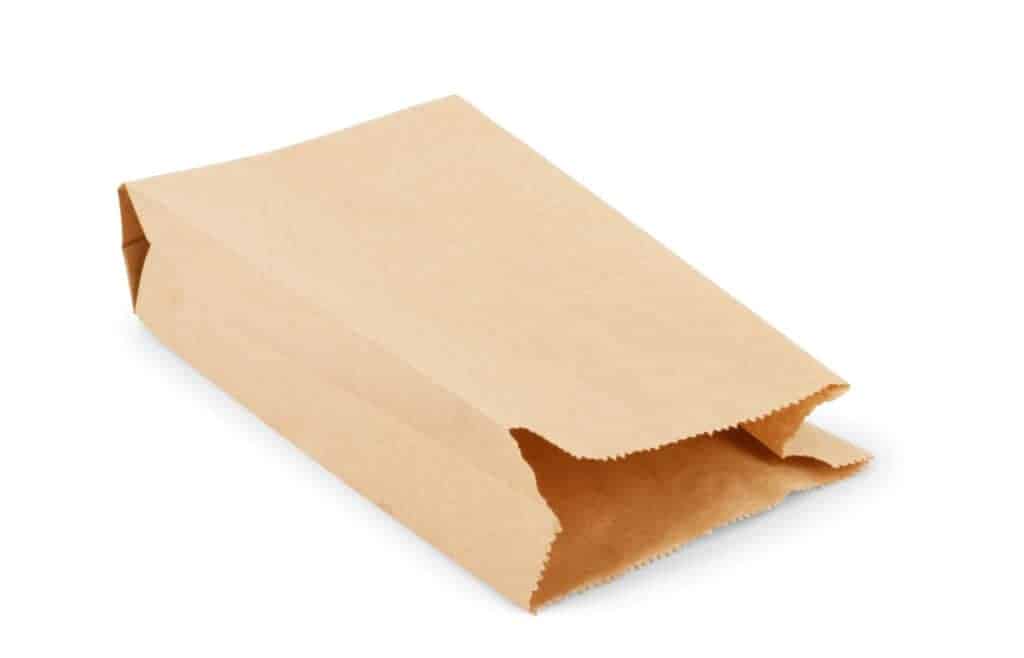
Some beekeepers have found using brown paper bags is also a cheap and reliable source of smoker fuel. You can either save these from the grocery store, if they use paper bags, or you can also purchase them. Not as affordable as free dried grass clippings but still a great alternative.
Like the other smoker fuels, ball up some paper, place it in the bottom of your smoker and light it. Pump the bellows a few times to get a nice flame and embers.
Then rip the brown paper bag into pieces, ball up the pieces to be nice and compact, then simply place on top of the smoldering starter paper. Keep pumping the bellows and adding the tightly compacted brown paper pieces. Once your smoker is full, close the lid, pump the bellows a few more times. This fuel produces a very nice cool smoke that is gentle on your bees.
I haven’t personally used brown paper as a smoker fuel but check out this video demonstrating how easy it lights and the cool smoke it produces.
Denim Blue Jeans
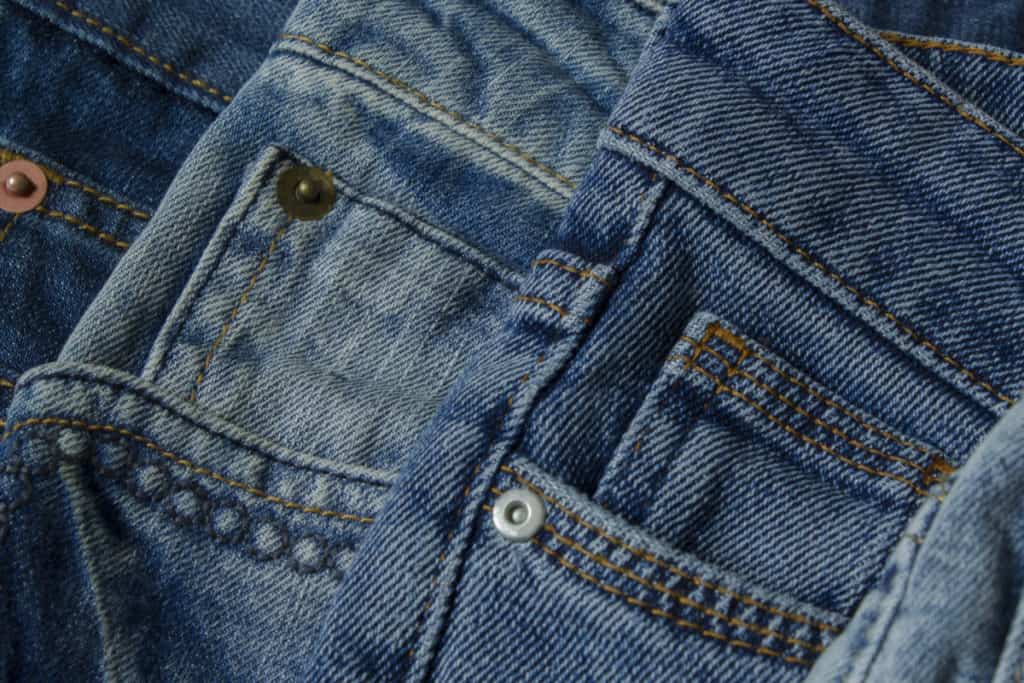
Another alternative fuel source is denim blue jeans made of 100% cotton. I was little surprised by this fuel source, but some beekeepers find this to be a great fuel for their smoker. It burns for a long time producing a nice smelling and cool gentle smoke for your bees.
Blue jeans are a cheap and reliable source of smoker fuel. You can use old denim blue jeans that you or your family have or simply purchase some at your local thrift store. Just make sure they are 100% cotton; you don’t want any other type of fabric such as spandex or polyester.
Like all the other fuels I’ve described above, you simply use paper as your starter. Simply ball up some paper or newspaper in the bottom of your smoker and light it. Once the paper is smoldering then simply place the denim on top and continue to pump the bellows. You will smell the denim once it begins to smoke, then simply close the lid and your good to go.
Here is a great video demonstrating how to easily light and use blue denim as a bee smoker fuel.
Old White Tee-shirts

Using old t-shirts is another great alternative fuel source for your bee smoker. This fuel is pretty much the same as using denim blue jeans. Old t-shirts are readily available since almost everyone has old white t-shirts that can be cut up and used as smoker fuel. Again, like the blue jeans, make sure they are 100% cotton with no other types of fabrics.
You can also purchase old white t-shirts at thrift stores and they light exactly the same as the blue denim jeans by simply using paper as a starter.
You’re probably starting to notice a common theme regarding the types of bee smoker fuels I recommend. They are all easily lit by paper, smolder easily, and create a cool gentle smoke for your bees.
Tobacco Leaves

Tobacco leaves also work great as a fuel source for your bee smoker. They are easy to light and produce a cool smoke just like pine needles, grass clippings, and dry hay. The reason I have this fuel source lower down on the list is because it’s simply not readily available to most people.
But if tobacco leaves are available in your area then give them a try. They are easily lit with paper as a starter, they produce a cool smoke, and when burnt smell way better than grass clippings or dry hay.
Pine Wood Shavings
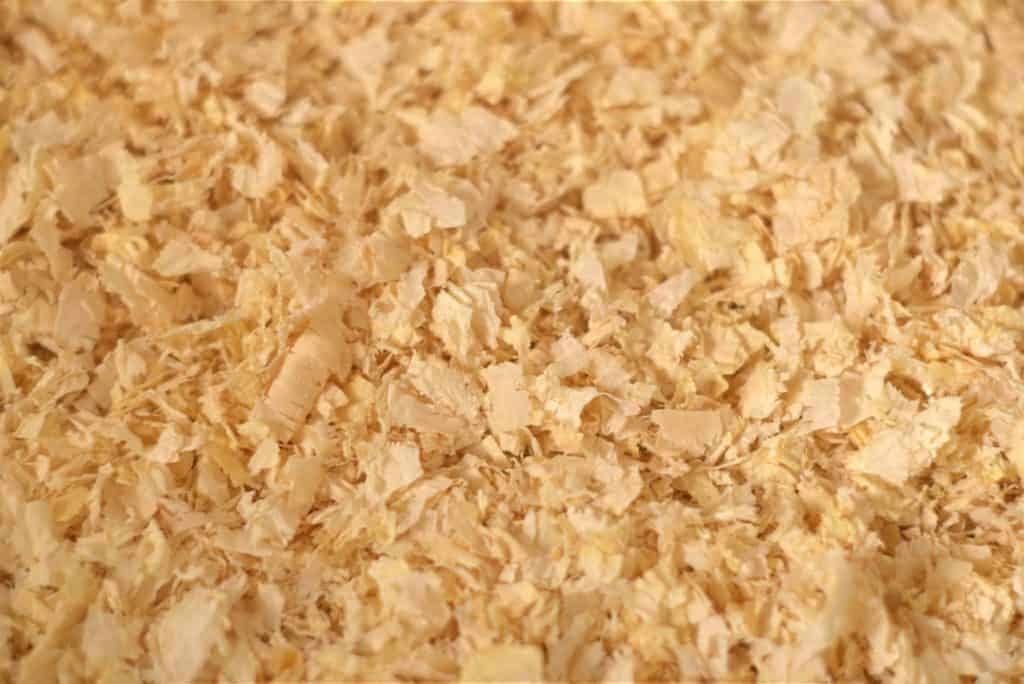
Some beekeepers like to use pine wood shavings in their smokers. You can find these shavings at any local pet store. But like any wood they do tend to burn a little too hot. The smoke that wood shavings produces tends to be way to hot for the bees and often sparks will fly out of your smoker as you use the bellows.
I wouldn’t recommend using pine wood shavings in your smoker. There is so many better and free alternatives as I’ve outlined above.
Cotton Cut Offs
Cotton cut offs can be purchased at most beekeeping supply stores but I wouldn’t recommend buying them. For the price it’s cheaper to buy a pair of blue denim jeans at a thrift store or purchase hay from a local farmer.
Also, you cannot light cotton cut offs without a proper starter like paper. Cotton cut offs require way too much heat to burn alone and will produce a very hot smoke. If you use paper as your starter then cotton cut offs will work fine. They will burn very similar to both blue denim and an old cotton t-shirt.
The only reason I wouldn’t bother is because of the cost. There is so many more affordable and free smoker fuels available.
Cardboard Egg Trays
Some beekeepers like to use cardboard egg trays as fuel for their bee smoker. I’ve never personally used egg trays as fuel, but other beekeepers swear by it. Burning cardboard egg trays will produce a cool smoke but it’s recommended to use paper as a starter like the other smoker fuels.
Compressed Wood Pellets
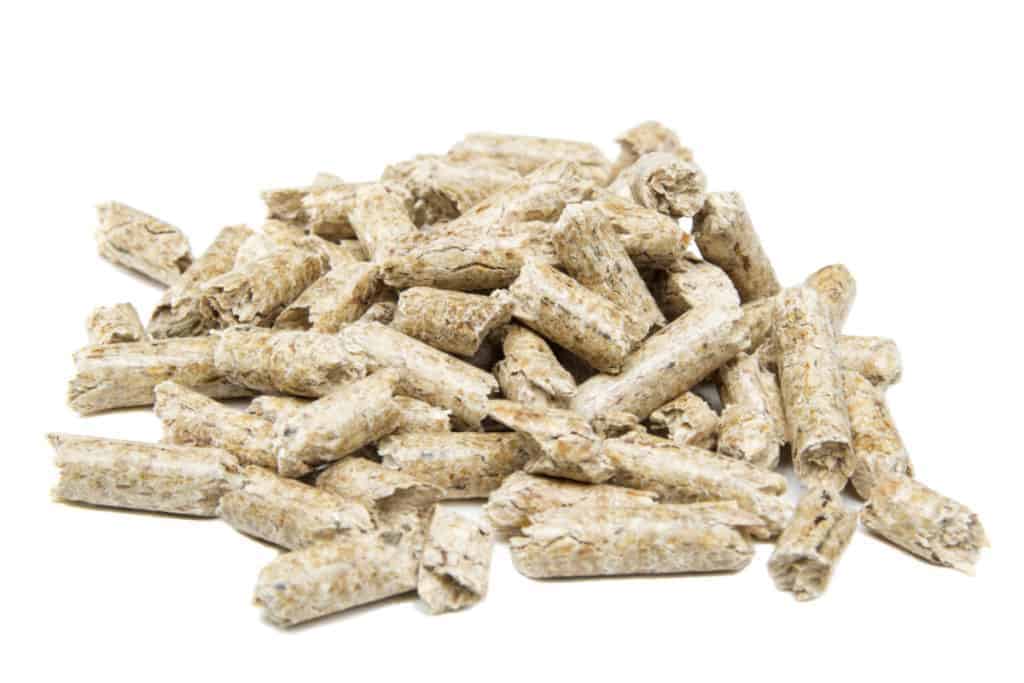
Using compressed wood pellets is often recommended as a fuel for a bee smoker. These do not work well and produce way to hot of a smoke for your bees. I would not recommend ever using wood pellets in your bee smoker.
You cannot light the wood pellets by themselves since they require way too much heat to get started. You can use a starter like paper then put the wood pellets on top but the smoke produced is still way to hot.
They also take a lot more work to get lit and smoldering compared to the ease of pine needles, grass clippings, or dry hay. The wood pellets will eventually produce a lot of smoke but is way to hot, and almost produces a form of steam as well.
All in all, I would never use wood pellets in a bee smoker.
Untreated Baling Twine
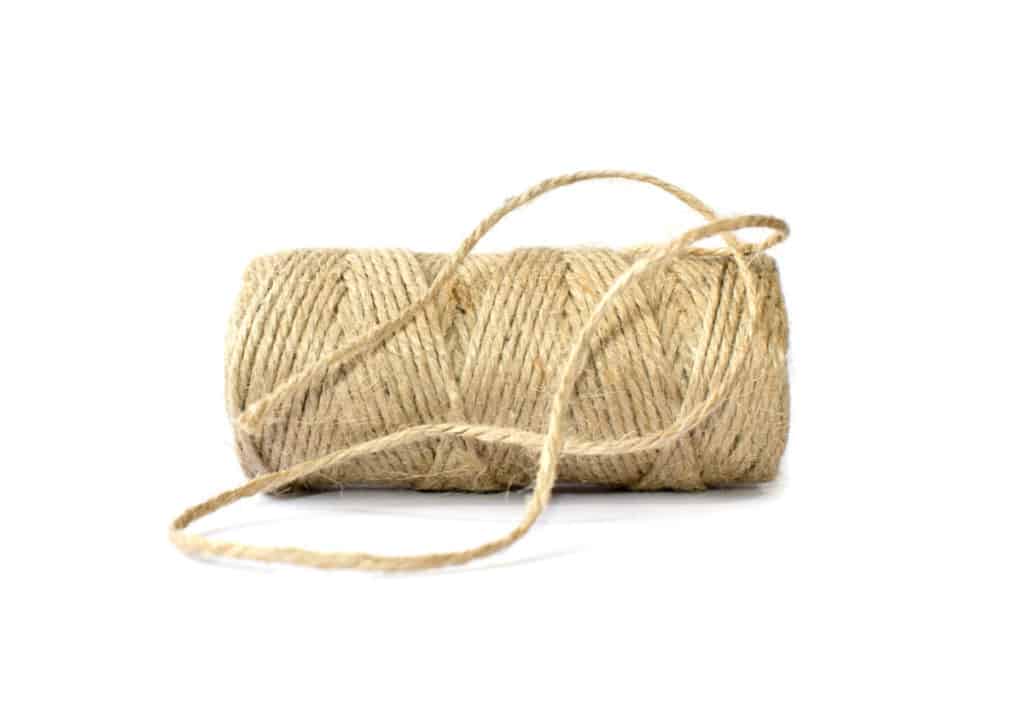
Lastly, untreated baling twine is another popular fuel that some beekeepers use exclusively. I’ve never used twine personally, but it’s known to produce a cool and gentle smoke for bees. It was also more commonly used before the advent of plastic baling twine.
Also, always use untreated baling twine and avoid the common plastic twine that most farms now use for their hay. It’s easily lit by placing crumpled newspaper in the bottom of the smoker, lighting the paper, then placing a coil of twine on top and repeatedly pumping the bellows. The twine will smolder for a long time and produce a nice cool smoke.
If your interested in trying twine it can be found in most beekeeping and farm supply stores for around $25 for a 300 foot roll. Just make sure its untreated.
Well that’s my list of the best and most commonly used bee smoker fuels. As with anything in life, the simplest solutions are often the best, and bee smoker fuels are no exception to this rule.
It really does come down to personal choice and convenience when choosing a bee smoker fuel. But I always prefer not to pay for something that I can simply gather quickly and is naturally readily available.
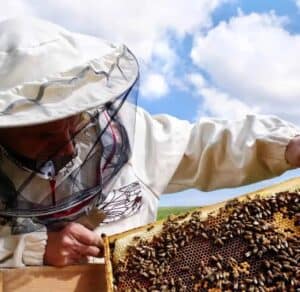
Joseph Davis
My goal is to show that anyone can take up beekeeping and it can be a very rewarding hobby. I strive to share my experiences and answer any questions you may have.
